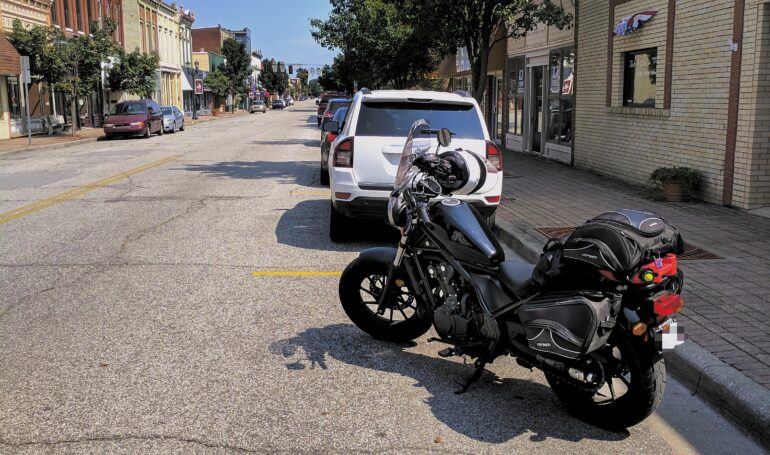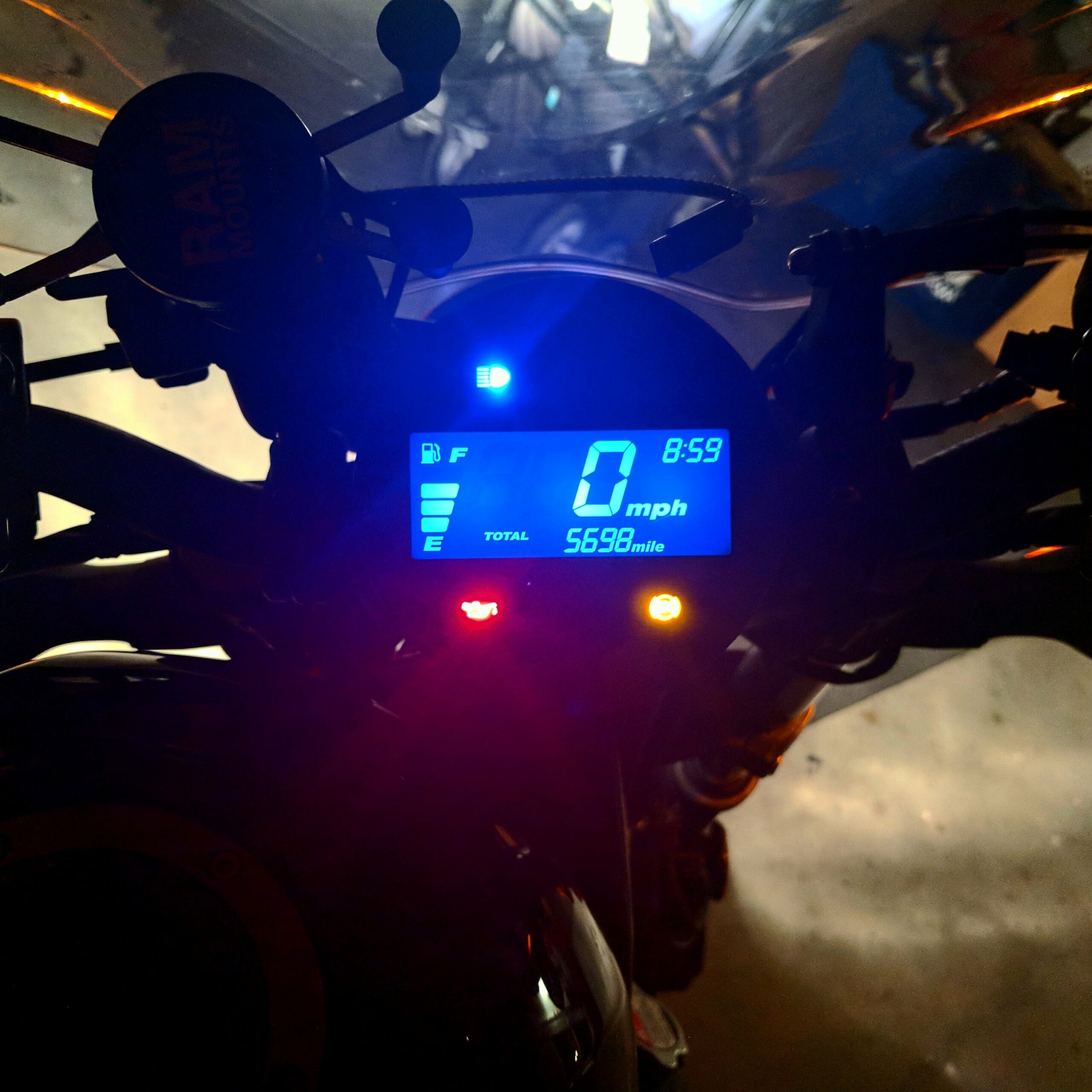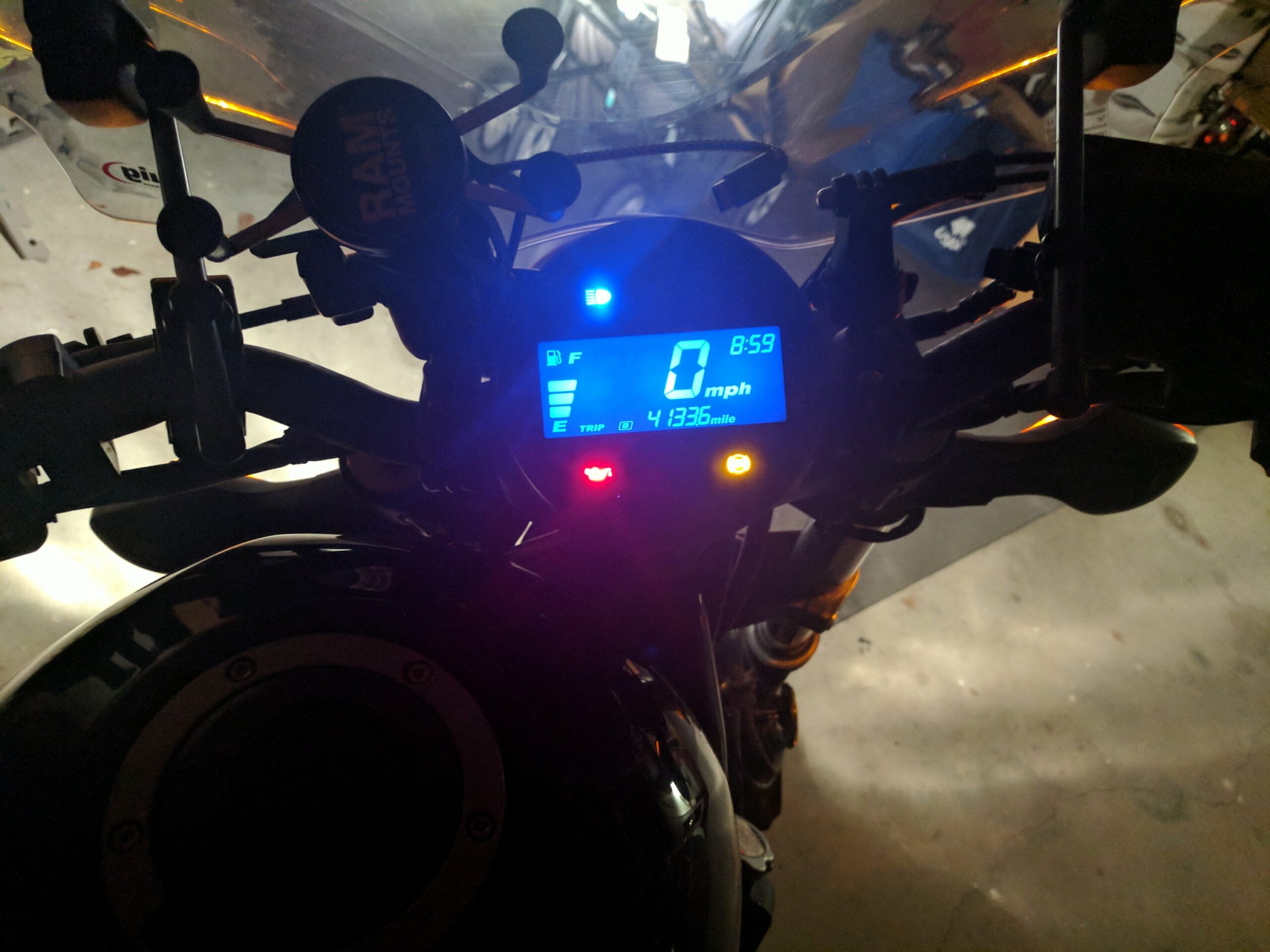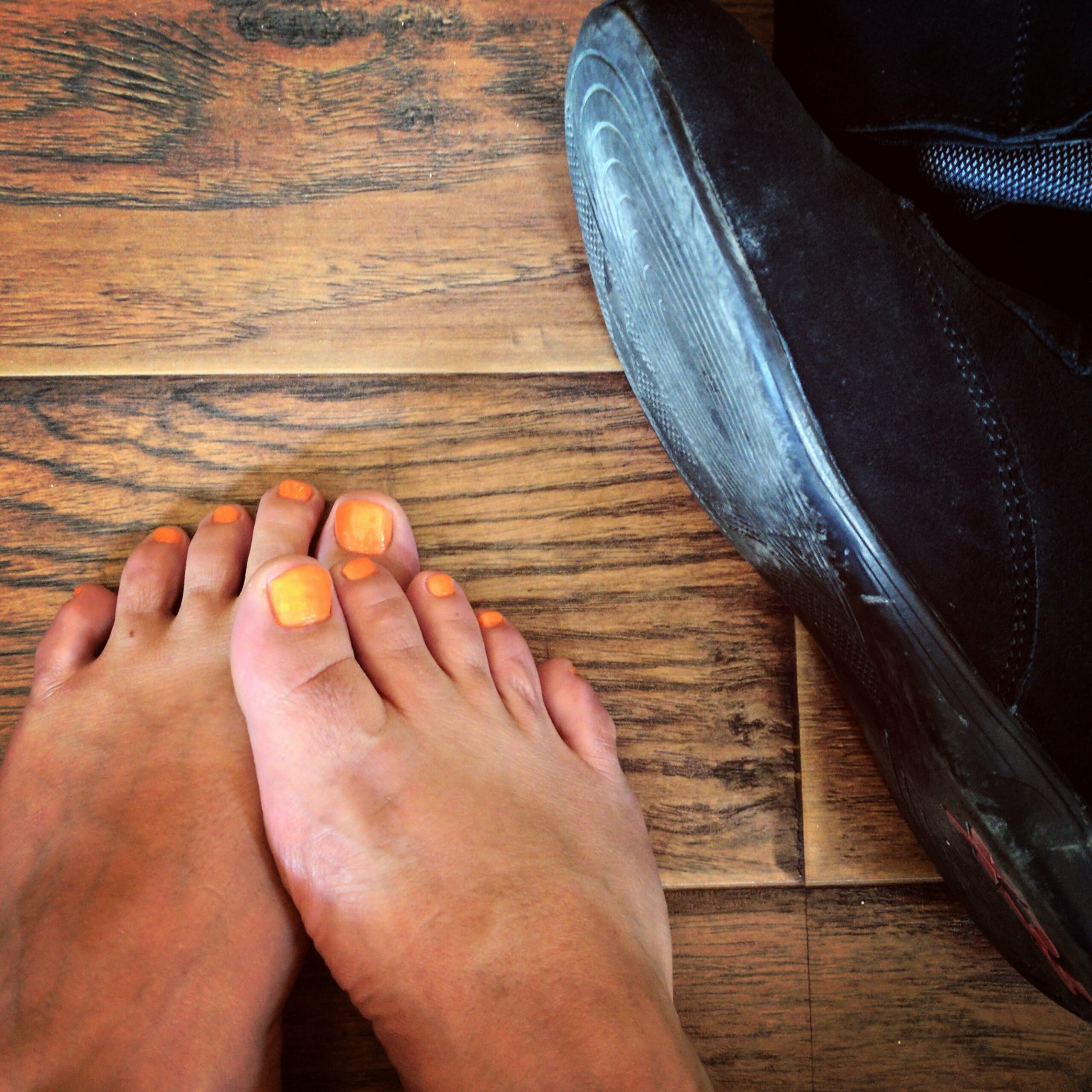
Kimi’s Guide to No Motorcycle Butt Pain
I fielded a lot of questions on my ride across America. “Where you riding to/from?” “Are you alone?” “No, really. You’re doing this by yourself?” “All your stuff fits in those bags?” “What do you do if you break down?” “What bike is that?” “Are you camping?” “Are you crazy?” “Are you carrying [a concealed weapon]?”
I will get to that last one in a later post because it’s facinating. However, the one question I get asked most often is, “Does your butt hurt?” Or some permutation of that like, “How’s your ass holding up?” Or “What do you do about your sore ass?” Or an insistence that “Man, your butt must hurt.”
No, actually, my ass doesn’t hurt. And, no, it’s not because I carry my own built in padding called a big ol’ bootie. There’s more to it than that.
Usually, the question comes from another rider who is familiar with the pain. Often, that other rider is a weekend warrior who goes on a big ride a few times a year. They regard the sore ass as a price to pay for third hobby thinking “It is what it is.” They try custom saddles, gel cushions, air cushions, back rests, padded pants and other gadgets.
They blame the seat.
They miss the point.
Way, way, way back in July, I rode my first long distance ride to Sunnyvale. Admittedly, I ached at then end. I pondered the same ass-ache problem and questioned whether I could complete a ride across America. In the short 8-1/2 weeks since that ride, I put more than 5600 miles on my bike in 83 days of ownership. Exactly 4133.6 of those miles were done in 22 day (two of which, I did not ride at all). On non-layover days, I rode 220-380 miles a day mostly on country roads. A leg took from 4-7 hours to complete.

All of that was on a stock seat. No springs. No gels. No air. No backrest. No bottom padded pants. No tricks.
At the end of the journey, my ass was not the achiest, sorest or most abused part of my body. My right knee an leg were achy, but I blame that on a surgeon sticking a scope in there last December. My hands were sore and I attribute that to holding the throttle. My toenails were abused, but that was because of a lack of a pedicure for 24 days. Given that, I figure I am authoratative enough to offer my guide to preventing long distance motorcycle ass ache.

Note, I wanted to call it “Kimi’s Guide to Preventing Moto-Butt Pain,” but googling ‘Moto-butt‘ offers mostly cheeky photos of ladies not wearing all their safety gear. Girl, the last place I want to risk road rash is on anything cheeky or near my cheekies. Just sayin’.
So, the longer and less fun title “Kimi’s Guide to No Motorcycle Butt Pain” resulted.
Preserve you butt while on the bike.
- Posture: File this under “No Shit,” but I see you riders out there with the seated slump. It’s the same slump they preach about with desk chairs. It’s the same slump they harp on in articles proclaiming sitting is terrible for your health. My first day out, I was achy. I blame all the anticipation, excitement and nervous energy. I rode tense – shoulders tight, legs tights, neck tight. Buried in my excitement, I missed my body signals screaming “fatigue” and “relax.” You might consider motorcycling a physical activity, but you are just sitting. Bike geometry isn’t always helpful. Cruiser encourage riders to assume the couch position – slumped with the tailbone curled under, knees splayed wide, feet forward, shoulders curled, chin jutted, elbows out. Add some monkey bars to that and your posture just looks ridiculous. Racing bikes encourage a lay over a tank tucked position – head tilted up, legs and arms tucked, knees hugging the tank, tail bone rolled out with a back arch. Street bikes, dual sports and dirt bikes probably offer the bet opportunity for good posture with the legs under the knees and the body upright, but too often that morphs into something similar to the cruiser position for long distance. I am not going to harp on what constitutes good posture. There’s articles galore for that, like this one. Good body posture also improves your ability to react, maneuver and turn.
- Undergarments: Personally, I don’t find women’s panties comfortable for long rides. I don’t like hems and seams on my cheeks where there is a vibrating engine nearby. There is no situation that I like a piece of fabric up ass-crack. Wear something comfortable that won’t cause chafing and make sure they aren’t cotton. For riding, I wear men’s no-fly sport boxers for riding. Women’s boxers are usually short with only the slighest nod ton making them shorts. They aren’t boy shorts, they are hot pants and my ass crack eats them (TMI? Well, this is a blog about ass ache). I wear these men’s no-fly micro fiber ones by Jockey. I recently saw these unisex ones by TomboyX too that I might try out. I want to support small business, but I do get 2 or 3 pairs from Jockey for that price.
- Anti-chafing: When I did triathalons and distance bicycling, I was constantly battling chafing in my nether regions. This lead me to discover all these anti-chafing products. As I sport zero thigh gap, these products are also awesome under skirts, for wearing shorts, with bathing suits and, now, for motorcycling. I like a cream such as Ruby’s Lube All Natural Anti-Chafe Anti-Blister Balm. Body Glide is a good stick version. And Anti Monkey Butt makes a great powder. Chafing sucks. Use it before you ride and don’t freaking wait until your already chafed.
- Body Scans: Now we get into some of my take aways from my regular yoga practice. When yoga teachers talk about a “yoga lifestyle,” they don’t mean wearing yoga pants all day. They are talking about bringing those body lessons you get on the mat off the mat. On a long ride, I try to take a body scan two or three times an hour. What else do you have to do during those long hours on the open road. Take 10 conscious deep belly breaths. It activates your parasympathetic nervous system and sends your body and brain some good vibes. While you are feeling those good vibes, do a scan of your body and mental state. Anywhere achy? How’s your posture? Where’s your brain? Anything stuck? Where in the world are you? Are you taking in the world as it slides by?
- On-Bike Exercises – After I get those belly breaths and a scan in, I do some on-bike exercises to relieve any pressure spots, get some circulation to muscles and reposition. First, I do some peg stands. I stand up for 20-30 seconds, then I do at least 10 peg squats. On a side note, you cruiser riders with your feet out in front and monkey bars are at a disadvantage here, which also means you are not in a optimal position for maneuvering. Second, these are not just for riding, they are for all day, everyday, during all things – 20 chin tucks. This movement maintains mobility in the cervical vertebra and counteracts that chin jut common with desk sitting, smart phone gazing and, yes, motorcycle riding. Ten to 20 handlebar presses are less about feeling like a weighted push-up, but more about getting those precious shoulder joints and elbow joints moving to circulate blood in the muscles and lubricating joints. Admittedly, neck stretches are tough on a motorcycle, so make sure you are in a safe place to do this. Turn your chin toward a shoulder (don’t take the bike with you) and dip your nose down to stretch the upper trapezius then put your ear to your shoulder to stretch the sternocliedomastoid. Don’t over do it.
- Movement: Dear riders, you are on a motorcycle, not sitting in a barkolounger with a remote in hand. This should be a physical activity not something you settle into and snooze. Move your body. Sure, on long straights and stretches of big slab there isn’t much opportunity to shift around for maneuvering. First, get off the straights and slabs as much as possible because that’s when things get fun. If you can’t get off them, then find a way to move. Do those exercises more often. Shift and lean for even the smallest turns. Point and flex your toes. Kick a leg straight and do some ankle rolls. Sit forward for a while then back for a while. Tilt your pelvis to different positions to get off hot spots. The last thing you want to be is stiff and settled into one position if you suddenly need to swerve. Move. Your. Body
- Take Real Breaks – My first day out, I would fill up from the saddles and not even take my helmet off. I did stop for a sit down breakfast of oatmeal and coffee. For some reason, I felt like I had to reach my destination early. It was partly to avoid the hottest part of August days in Nevada, but I ended up sitting at a dinner for a 2 plus hour lunch stalling before I could check in. I could have ridden more, but I was achy because I didn’t follow my advice here. After that, I got into a routine at stops. I aimed to stop every 75-90 minutes and I would just top off the tank too. I fill up then park the bike. Take off my helmet, remove my ear plugs and get off the bike. Whether it’s to the restroom or in circles with a cup of coffee in my hand, I would walk around a bit. Then, I do some stretches. Seriously, treat this like an athletic activity and do some stretches, right there at the gas station in the parking lot for all to see. Who cares, it’s my ass I am preserving so I can complete 22 days riding across the country. I like toe touches, standing torso twists (I like to use a wall assist), calf stretches, wrist stretches, side stretches and quadracep stretches among others.
Off -Bike Preparation
- Set Reminders: I mentioned lots of stuff to do at various intervals. If you get zoned out or simply tend to blow things off without a reminder, set some timers. I like to use the MindBell app for this.
- Practice Yoga or Stretching and Mindfulness Regularly: I’ve been practicing yoga for probably 20 years, but I didn’t really start integrating it into my life off the mat until probably the last 5 or 6 years. I crave my time on the mat and try to do a structured class or self practice three times a week. But, I integrate yogic skills into as many aspects of my life as I can. I find new ways to do this all the time. But, it takes regular practice to make these skills accessible. So, for this stuff to be habitual daily including on the motorcycle, it must be practiced. You can’t just sit on your bike and and demand your mind and body find deep breathing, body scans, good posture and effective stretching unless your body is used to doing these things daily off the bike. It doesn’t have to be yoga, but it should be a practice where you get in tough with your body, breath and mind to build both strength and flexibility. Get a regular practice, it is so worth it.
- Strength and Cardio: I maintain and okay baseline of fitness, but I must admit, I am remiss on my strength and cardio work lately. Yoga is not a substitute for either. My less-than-optimal fitness level shows up on the bike. I fatigue easier. I get muscle twitches at night. I carry extra pounds that make it tougher to stay ahead of sore butt syndrom. This is an area I am working on, but it is probably the most important off-bike thing I can do.
So, there you have it. All the 5000miles of wisdom I have about fending off sore ass syndrom on long hauls on a bike. Motorcycling should be fun. Ending a long day in the saddle aching and sore doesn’t prove how tough you are, it just indicates your riding days will be numbered and limited.
So, happy cooking and long distance riding!
Leave a Reply